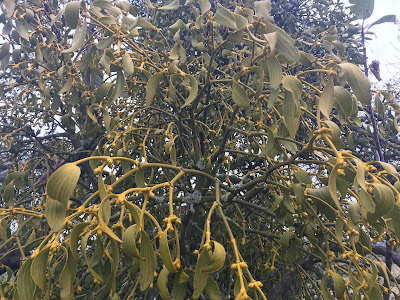On a bright and brittle December morning, fortified by hot chocolate and wearing not quite enough clothes, we made our way along the high street. It was the week before Christmas and Topsham was twinkling. But we weren't Christmas shopping, we were going on a cruise! The water of the estuary glittered as we stepped onto the little ferry. It was very cold.
As we headed down the river our expert RSPB guides, both conveniently called John, talked about the Exe Estuary: an internationally important area which is protected because of the waders and water fowl that flock there in their thousands during the winter. It is all about the nutrient-rich mud, apparently. And the mild climate! A chill wind whipped off the water, icing fingers to binoculars and tugging at loose scarves and hats, but the birds from the High Arctic, from frozen northern Europe, Siberia and Iceland and were happy in the ice-free waters.
The Johns were able to give clear and practical hints to help with spotting and identification and so we chugged contentedly between shining banks of silt. Curlew spiked their long beaks into the soft mud for worms; bright turnstones turned stones, sanderling and dunlin fussed and rushed across the surface. There were large groups of godwits - black tailed and bar tailed - resting. Flocks of lapwing flipped and dipped in the air; their calls were shredded by the wind and bounced back to us along with the curlew's haunting cry and the piping of the oyster catcher. The mud smelled of salt and minerals. From our vantage point in the middle of the river we had fantastic views of grey plover, redshank and greenshank And there were avocets everywhere in large feeding flocks. The emblematic bird is smart and elegant. The tall black and white wader has steel blue legs and a long, slender bill which turns up at the end. They swoosh this perfectly shaped tool through the sediment on the edge of a rising tide to find worms and tiny crustaceans. We gazed, entranced.
After such a satisfying haul of waders, two very special ducks caught our attention. A spectacular male pintail stood proudly as we cruised slowly by, cameras clicking. As we neared the turn in the river, we were accompanied by a small group of red-breasted merganser - the fabulous diving duck. Its tousled bottle-green head and slender, red saw-bill were unmistakable.
The Exe Estuary is a rich feeding ground for so many species of watery bird and getting out onto the river affords excellent views of many of them, without causing disturbance. But don't be fooled by talk of a mild climate: I was chilled to the marrow for hours afterwards. Do go. Do wear lots of clothes!


